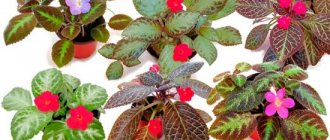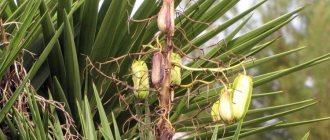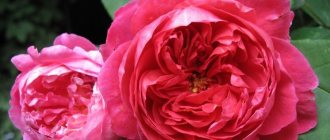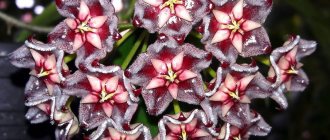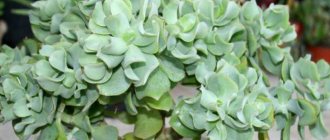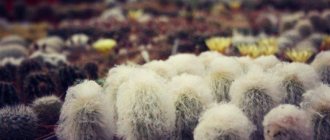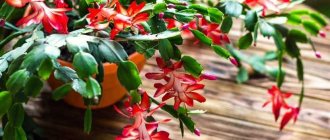- March 24, 2019
- Flowers
- Natali Michaelis
Heliotrope is a herbaceous perennial plant that came to Russia several centuries ago. Lovers of indoor flowers especially appreciate it for its subtle aroma and decorative appearance. Caring for and planting Marin heliotrope (photos will be given in the article) is not overly complicated, so even an inexperienced gardener can cope with the task of growing it. Read about all the nuances that a flora lover will encounter in our article.
Features of the variety and description
Heliotrope Marin is a tree-like shrub, the height of which often reaches half a meter. The leaves are arranged alternately on short cuttings, which is why the crop has a rather lush shape. Small flowers of rich blue-violet color are collected in inflorescences in the form of corymbs. The plant is also characterized by the presence of fruits, which consist of four parts - nuts. These parts can contain up to one and a half thousand seeds, the total weight of which is only 1 gram.
The first flowering of indoor crops can occur in the same year as sowing. The buds begin to set in early June and open after about a week. With proper care, the flowering period lasts until the cold weather. Perhaps it is precisely because of this that the perennial heliotrope Marin is so loved by gardeners. However, without proper care, the plant may die, so let's look at the basic rules for growing it.
Varieties
Heliotrope Marin is available in several varieties:
- Princess Marin is a plant that does not exceed thirty centimeters in height. Its small inflorescences are colored bluish-violet.
- White lady. Low-growing form with abundant flowering. The pink buds turn into small white flowers after blooming.
- The sea dwarf is a miniature and very decorative species. The bright inflorescences are blue and have a pleasant aroma.
- Odysseus. The plant variety reaches a height of no more than thirty centimeters, but at the same time has large velvety flowers of a bright lilac hue.
- Sea Breeze is a medium sized plant. Spreading bushes grow up to 50 centimeters. The foliage of the plant is dark green and the inflorescences are blue. The flowering period lasts from June to the end of October.
- Heliotrope Marin mini is another low-growing form, reaching a height of only 25 centimeters. It differs from other varieties in its color. The foliage is green with a purple tint.
Choosing a landing site
Heliotrope Marin is very demanding in terms of lighting, so it is worth choosing a place that is illuminated by the sun most of the day. The best option for growing is a terrace or balcony with large windows. Also, all heliotropes can be grown outside in flower beds. They are often used to form borders, which not only look very impressive, but also smell pleasant. However, when planting in open ground, it is recommended to protect the area from rain and strong winds. It is best to plant the plant under polycarbonate canopies, avoiding places near the corners of buildings, as they often experience strong drafts.
Growing heliotrope Marin
Heliotrope Marin is suitable for growing in open ground. However, due to intolerance to negative temperatures, it must be removed indoors for wintering.
Watering and fertilizing
An adult plant does not need frequent watering. Water should be poured under the root only after a dry crust has formed around the flower. A period of drought negatively affects its decorative qualities, so in hot and dry weather, Marin heliotrope is watered every day. If there is sufficient rainfall, you should be careful with watering, since the flower is susceptible to fungal diseases.
Excessive watering with cold water can cause rust and gray rot.
Heliotrope Marin prefers mineral complex fertilizers, which have the most favorable effect on the duration and splendor of flowering. Fertilizing is applied every 14-15 days after planting and until the first buds appear.
Weeding, loosening, mulching
Gardeners who rarely visit their plots are advised to mulch the soil around the heliotrope with hay, wood shavings or sawdust. This manipulation allows you to retain water in the ground for a long period and eliminates the need for regular loosening and weeding of the flower bed. Mulching significantly reduces the risk of fungal infections and mold damage to Marin heliotrope.
Topping
When the seedlings grow to 11-12 cm, the growth point of each is pinched. Thanks to this procedure, Marin heliotrope bushes will be more lush and bloom profusely.
Wintering
In winter, heliotrope tree Marin is in a dormant state; it needs to be provided with temperature conditions from +5 to +8 ° C. Since the plant is heat-loving and prefers a subtropical climate, for wintering it is dug out from open ground and planted in a pot, which must be kept indoors until spring.
Planting seedlings in open ground
Planting heliotrope Marina in open ground should be done in the spring, as soon as the night frosts stop. Try to do this before the end of May, otherwise the plant will devote most of its energy not to rooting, but to the formation of buds. If the plant needs to be planted in summer or autumn, then you will first need to trim off all opened and unopened flowers.
It is also recommended to prepare seedlings for planting in open ground. To do this, the pot with the flower must be taken outside at night for several days. The hardening procedure will speed up the rooting process, but it is only allowed if the likelihood of sudden night and morning frosts is minimized.
When planting, you should maintain a distance of 20-30 centimeters between neighboring seedlings. It is also strongly recommended to place humus or leaves in the holes. This will allow you to enrich the soil with organic matter and not have to worry about fertilizing for the first year. In the first week after planting, the soil must be moistened daily by spraying, since watering from a watering can can harm the roots.
Reproduction
At first , heliotropes were propagated exclusively by cuttings. With the development of selection, varieties appeared whose propagation became possible not only by cuttings, but also by seeds. Among them is heliotrope “Marin”.
Cuttings . The mother plant is carefully dug out of the soil with a lump of earth, placed in a container and brought into a warm room to overwinter.
be watered as the soil dries out. In February (in the middle of the month) cuttings are made from it. Each shoot should have 3 or 4 internodes. There is no need to leave a lot of leaves on the shoot: this will weaken it.
Sand and humus are poured into the boxes Before planting the cuttings, they are kept in a special composition for root formation.
After planting in the substrate, the shoots are covered with film and wait for the roots to appear, watering the cuttings daily and ventilating them for half an hour, opening the film. Typically, it takes 3 weeks for roots to form. Then the cuttings are transplanted into soil that is more nutritious in composition: peat, turf and sand in a ratio of 4: 2: 1.
The soil is fertilized with a complex fertilizer containing minerals. For the first week, young plants should not be exposed to direct sunlight; they should be sprayed with water at a temperature slightly above room temperature 2 times a day.
To make future bushes compact, seedlings are repeatedly pinched as they grow. They are planted in open ground after the end of frost in the spring, leaving a distance of 20 centimeters between plants.
Seeds . Planting months: January, February, March. To grow seedlings, Russian seed producers recommend scattering heliotrope seeds over the surface of the ground, pressing them in, but not covering them with anything. European manufacturers recommend covering scattered seeds with a 3-mm layer of soil.
The germination period is up to 20 days. The boxes should be kept warm and illuminated, since light is necessary for seed germination. After 37 days, the sprouts are distributed into separate containers and the containers are placed in a cooler room with ventilation.
The plant will be bushy if you pinch out the shoots as they grow.
Caring for an adult plant
Judging by the reviews, Marin heliotrope is a fairly unpretentious crop only in the adult phase. If you manage to keep the plant in good health for a year after planting, then further care for it will not be difficult. It will be enough to moisten the soil in a timely manner, take care of additional shading on hot summer days, cover the flower for the winter and fertilize the soil with organic and mineral fertilizers. We will examine all these nuances in more detail in the following sections.
Description of heliotrope
This is an annual plant with wonderfully fragrant inflorescences and noble dark green, velvety leaves.
The flower is not demanding on conditions and is not susceptible to diseases and pest attacks. All plants grow an impressive green mass. The leaves have short petioles, their surface is slightly wrinkled and shaggy. They are arranged one by one. Small flowers are collected into neat crowns. They contain essential oils that have found their use in perfumery. There are also poisonous varieties of heliotrope that contain special substances - alkaloids that damage the nervous system and liver of animals. Similar features are characteristic of European heliotrope, as well as pubescent.
The name “heliotrope” is translated from ancient Greek as “rotating towards the sun”. The plant is named so because during the day the inflorescences turn in the direction of the sun.
Watering
Adult heliotrope Marin (photo below) does not require frequent watering. It is worth noting that the plant tolerates drought much easier than excess moisture. Even on summer days, various fungal infections can occur in the ground, affecting the root system of the plant, so you should water the heliotrope only when a dry crust, at least two centimeters thick, appears on the soil around it. Water is poured under the root using a watering can with a rain nozzle. It is strongly recommended to avoid getting the buds wet in hot weather.
As for a houseplant, watering will not be much different from a soil crop. It is necessary to monitor the condition of the substrate in the pot and water the flower only when a dry crust forms on top. You can use a wooden stick or your finger to test the moisture. Also, you should not allow moisture to remain in the pan, as this can provoke the development of various diseases. It is also recommended to place a drainage layer consisting of broken bricks or stones at the bottom of the pot when replanting, so that air can easily penetrate to the roots.
Heliotrope in landscape design
Deer antlers are a bizarrely shaped flower. Care and cultivation
Heliotrope in landscape design
Semi-shrub and standard forms remain the most preferred. Aerial flowers look spectacular against the background of a lawn, along a house or gazebo. Low-growing species and varieties are used in border plantings.
In massive flowerpots and pots, the plant will decorate a balcony, terrace, or entrance to a room.
Heliotrope in a flowerbed photo
The pleasant aroma exuded by the exquisite resident of the garden plays an important role. It is advisable to plant under windows, near recreation areas, in order to feel the sweetish amber.
Heliotrope photo in the garden
Heliotrope is great in a classic combination with roses; it looks good with many, even “unexpected” plants. Suitable neighbors will be coleus, begonia, rudbeckia, the bottom row in a multi-level planting will be filled with petunia, cinenaria, and astilbe and verbena will help dilute the variegated colors of heliotrope.
Top dressing
If we are talking about a houseplant, then the first feeding should be carried out 12 days after transplanting the flower from the transport pot. After this, the procedure is repeated annually two weeks after the start of mass flowering. Remember that a lack of nutrition does not affect the health of a plant as much as its excess. Even the slightest error in proportions can lead to the death of the flower.
As for the ground plant, the initial feeding in the form of humus should be enough for a whole year. In the future, it is necessary to fertilize the soil with special organic and mineral fertilizers, which can be purchased at any flower shop. An alternative option is cow manure diluted in rainwater in a ratio of 1:10.
Nuances of cultivation
Marin heliotrope flowers are very delicate. When water gets on them, they quickly wither, so it is recommended to water the plants at the root. It is worth noting that this type of heliotrope, as we have already mentioned, is capable of propagation by seeds. However, in terms of odor intensity, it is significantly inferior to those varieties that are propagated only by cuttings.
Tree heliotrope is popular because of its appearance. But there is always a risk of a tall bush turning into a ground cover plant. Therefore, gardeners sometimes have to tie them up. Marin is suitable for growing not only indoors, but also outdoors.
Common diseases
Most often, plants grown in open ground conditions are subject to such misfortunes. Most diseases are directly related to improper plant care, for example, excessive watering. If a flower is affected by root rot, it will be almost impossible to save it. The only option is to cut off the affected roots of the flower and replant it in a new location.
You should also be wary of the appearance of brown spots on the leaves - a clear sign of powdery mildew. The development of the disease is provoked by cold drops of rain or morning dew, which do not dry out for a long time. You can get rid of the disease using the drug “Fitosparin” by spraying the leaf or applying the solution at the root.
Features of cultivation
Heliotropes can become victims of:
- aphids;
- whiteflies;
- spider mite.
It is easy to destroy aphids using traditional methods. Due to the fact that this insect breathes through the surface of the body, it is necessary to cover it with soap film. It will block access to oxygen, and the aphid will die. To do this, dilute the soap in water so that the solution foams well. Spray the bushes with it from all sides. This is best done in cloudy weather or in the evening. Ladybugs can also scare away aphids. To attract it to your plot, plant mustard greens and dill on it.
Whiteflies can be easily defeated with the help of garlic infusion, which is prepared as follows:
- Crush 100-150 g of garlic with a heavy object. You don't need to clean it for this.
- Pour 1 liter of water over the garlic.
- Leave the product to infuse for 7 days.
- Strain the infusion.
To spray heliotrope, the resulting mixture is diluted with water in a ratio of 1 to 20.
Sometimes whiteflies appear on sun worshipers growing at home. Then the most convenient way to deal with them is with adhesive tapes. You can use the ones sold for flies.
The most difficult thing to deal with is spider mites. You can try to remove it with garlic infusion, but this is too weak a remedy for it.
Advice! Not the safest, but the most effective way to control pests is the use of insecticides (Aktara, Inta-vir). One treatment is sufficient to kill whiteflies and aphids. But in the case of spider mites, at least 2 of them will be required with an interval of 1 week.
Heliotropes are sometimes affected by fungal infections. Most often this happens when the soil is over-moistened. This is also facilitated by large temperature changes and heavy dew: such conditions form in August. Most often flowers are affected by:
- rust (rust spots appear on leaves and stems);
- gray rot (leaves seem to be strewn with gray flour);
- root rot (there are no external signs other than deterioration of the plant’s condition).
It is best to combat rust and gray mold by spraying the bushes with fungicide solutions. A 0.2-0.4% solution of Fundazol is optimal. Before processing, damaged parts of plants are removed. If the shoot is severely affected, it is cut out completely.
With root rot, treatment with drugs will not help. Therefore, the plant needs to be dug up and burned to prevent damage to neighboring flowers.
Advice! To prevent fungal infections, spray heliotrope every 2 weeks with a solution of Fitosporin. In cloudy weather, treatment can be done 2 times more often.
Heliotrope is not the most common flower among gardeners, but it still deserves their attention. Although the plant does not have a variety of colors, it blooms long and luxuriantly. And if you transplant it into a flower pot before frost arrives, then the indoor lilac will delight the eye for many more years.
List of pests
Houseplants are rarely affected by pests. Most often this happens after a diseased plant is brought into the house. Insects move from one flower to another and begin to reproduce in a new environment. In this case, you should immediately create a quarantine zone for diseased plants in a separate room and begin a “course of treatment.” Here is a list of the most common pests and how to combat them:
- aphids - repeated treatment with any insecticidal preparation;
- spider mite - covering a flower with a bag of cigarette smoke;
- whitefly - treating flower leaves with green soap.
If the soil crop has been affected by pests, then it will be possible to cope with the scourge exclusively with insecticidal agents. Moreover, the treatment should be carried out on a windless day at sunset or dawn, so that the substance remains on the parts of the plant for as long as possible. Various folk remedies for controlling insects in open ground will most likely be useless, but they can be combined with chemical treatment.
Diseases and pests
Whitefly. The plant needs to be treated with an insecticide 2 times (every week).
Spider mite. Cobwebs, pale spots on the underside of leaves. Because The tick is not an insect; fighting it with insecticides is ineffective.
Acaricides or insectoacaricides are needed For example, Apollo. The biological method of control is phytoseiulus mites, which eat other mites.
Aphid . Repeated treatment with insecticide.
Seed planting technology
Unlike other varieties, heliotrope Marin can only be propagated generatively. Cuttings and dividing the bush will not bring absolutely any results. Therefore, let's look at the main stages of growing Marin heliotrope from seeds.
- We prepare the ground. To do this, it will be enough to purchase a ready-made substrate for heliotropes at a flower shop. It is highly not recommended to prepare the soil yourself, since the flower is very picky about its composition.
- Plant the seeds in cups. In this case, you should not bury the seed more than 5 millimeters from the surface. Otherwise, the sprouts simply will not have enough strength to break through the soil layer.
- We're making a greenhouse. After watering the substrate, it is recommended to additionally cover the cups with polyethylene or glass to create a greenhouse effect (do not forget about daily ventilation).
The percentage of germination directly depends on the quality of the seed, but the first shoots, as a rule, appear a month or two after planting. Further care is no different from the rules described above.
Popular types and varieties of heliotrope
Depending on the variety and, accordingly, the size of the shrub, it is usually grown either in open ground in group or single plantings, or in containers and hanging pots.
The most common plant varieties are listed below.
Sea breeze
This plant variety has bright purple flowers and a particularly delicate and persistent aroma.
Important! Sea Breeze heliotrope can be planted either in open soil or in a pot, where under room conditions it can bloom for a whole year. In this case, an important condition will be to pinch it periodically, otherwise you will not get a uniform and fluffy plant.
Marin (Marina)
The tree-like variety of the plant is characterized by rather high growth (about 40-50 cm), and its inflorescences are quite large. This is a heliotrope, planting and caring for which are not particularly different from caring for other varieties. The only point that you need to remember when planting Marina heliotrope on the site is that growing from seeds should be carried out in a warm, well-lit place, since sprouts will not appear in insufficient lighting.
Heliotrope Marina has bright purple inflorescences
European
It is an annual herbaceous plant, the stem is straight, branched, and pubescent. It reaches a height of 25 to 40 cm, the leaf is light, ovoid, small. The flowers are collected in spiral racemes at the top of the shoots, white, small seeds are in wrinkled ovoid nuts
European heliotrope is a flower, the cultivation of which should be carried out with the necessary precautions - protect children and animals from contact with it, as it is poisonous (like pubescent heliotrope)
Odysseus
This variety is most often used for growing in flowerpots and used to decorate balconies. It can also become a decoration for a dacha in carpet flower beds, since this variety of heliotrope produces flowers throughout the entire season, until frost, and very abundantly.
Compatibility with other plants
In order for Marin heliotrope to feel as comfortable as possible in the open ground, it is necessary to follow the basic rules of the neighborhood. It is highly not recommended to plant the flower in areas where there are large trees, as they create unnecessary shading. But climbing roses or marigolds will be excellent neighbors for heliotrope, since they not only do not interfere with its normal growth, but also harmoniously combine with its appearance and aroma. You can also add garden geranium or petunia to the flowerbed to dilute the dazzling purple tone of heliotropes with another color. Wormwood and lavender can also help with this. However, do not forget that if one plant is damaged by pests, the insects will spread to neighboring plants.
Description of the plant
The heliotrope flower (Heliotropium) is native to South America. It can also be found in the Mediterranean region, deserts and semi-deserts of Asia. In our area, the most commonly cultivated plant is Peruvian heliotrope (Heliotropium arborescens), which occurs naturally in Peru and Ecuador.
The name of the plant comes from two words:
- helios – translated from Greek as “sun”,
- Tropen – translated “to rotate”.
Since ancient times, people have noticed how the flowers of this plant turn after the Sun.
Morphology
These are annual or perennial plants, shrubs or subshrubs, reaching a height of up to 60 centimeters. A characteristic feature of heliotrope is its oval, wrinkled and pubescent leaves and small flowers that appear from May to August. Flowering sometimes continues until the first frost.
White, yellow, lilac or blue flowers are collected in large inflorescences. They emit an intense vanilla aroma. The individual flowers are small (shaped like forget-me-nots), collected in large umbrella inflorescences.
Some gardeners recommend heliotrope to repel mosquitoes. Varieties growing in natural conditions have branched, rigid shoots. The heliotrope fruit is spherical, wrinkled, brownish-brown, divided into four lobes.
The plant behaves interestingly - it can change the position of the flowers, turning them away from the sun.
Attention! European and pubescent heliotrope contain toxic substances - alkaloids (cynoglossin, heliotropin, lasiocarpine). When these compounds enter the body, they can cause damage to the liver and central nervous system. When planting in flower beds and balconies, access to them by small children should be limited.
Main problems when growing
In order to prevent the main mistakes that novice gardeners make when growing, we recommend that you familiarize yourself with the list of the main problems that arise most often when growing this flower.
- Withering of buds. A similar problem most often occurs after rain, since drops fall inside the inflorescence and remain there for quite a long time. If you want to avoid such a development of events on your site, then take care in advance to protect your plants from rain, for example, build a canopy from film or polycarbonate.
- Excessive spreading of bushes. A fairly common occurrence in the flowerbeds of novice gardeners. To form the volume of the plant, it is necessary to regularly tie up young branches using slats and nylon thread. Also, do not be afraid to trim off an excess shoot if it does not fit into the decorative appearance of the bush.
- Dry tips of leaves. A clear indicator of a lack of moisture in the soil, which most often manifests itself in the summer. It is recommended not only to water the crop in a timely manner, but also to take care of a source of additional shading. For example, you can use garden netting.
As you can see, growing heliotrope at home is not difficult if you know the basic rules for caring for this flower. If you follow the recommendations given above, the plant will definitely delight you with its decorative appearance and enchanting aroma.
Heliotrope flower - photo, description, varieties
In our climatic conditions in garden culture, the flower is grown as an annual.
At home it can grow for several years. The wrinkled dark green leaves of the plant are drooping, supported by short petioles and ovoid in shape. Dark blue or purple fragrant flowers (pictured) collected in thick shields contain valuable essential oils. This is why heliotrope is popular in perfume compositions.
The plant blooms for about a month and forms a fruit that splits into four parts when ripe. However, some new hybrid varieties bloom profusely and for a long time. You can enjoy their blooms from mid-summer until frost. The height of the bush can reach 60 cm. Flowers in open areas constantly turn towards the sun.
Varieties and varieties with photos
Shrub heliotrope has about 250 species. Of these, the most popular are:
- Peruvian;
- stem-encompassing;
- corymbose;
- Kurasawa;
- European.
You can see all representatives of these species in the photo.
The most common and used in our gardens is Peruvian heliotrope. The plant reaches a height of 50 cm, has wrinkled leaves, and the flowering period is from early summer to late autumn.
Of all the available varieties, there are seven most popular:
- "White Lady" - the plant is characterized by white delicate flowers and pink buds.
- "Regal Dwarf" is a compact bush with large fragrant flowers.
- "Dwarf Marin" reaches a height of 35 cm and blooms with dark blue flowers (pictured).
- "Black Beauty" is a variety with purple flowers and a vanilla aroma.
- 'Mini Marine' features violet-blue flowers and dark green leaves tinged with purple.
- “Princess Marina” is a compact bush 30 cm high, rich in color and faint aroma.
- "Baby Blue" is a new variety of heliotrope, the flowers of which are lilac-violet in color.
Reviews with photos about growing heliotrope flowers from seeds
Solovyova Tatyana Vladislavovna, 37 years old, Klin
This year I grew a beautiful heliotrope from seeds for the first time. The material took quite a long time to germinate, three weeks, and I already thought that I wouldn’t get the seedlings. But the sprouts still appeared and subsequently developed without problems. The main difficulty was providing additional lighting to the seedlings; there was not enough natural sun.
Gradova Irina Fedorovna, 52 years old, Saratov
I have been growing heliotrope from seeds for three years now; I really like this beautiful perennial. Planting does not cause problems, care is also simple. I tried using my own seeds once, but I didn’t like the result; the plants turned out weak and uninteresting. Now every season I order material on the Internet.
Collecting seeds
Growing heliotrope is not difficult. But collecting plant seeds is not so easy. Getting your own seeds does not always give good results. And the reason for this is our climate. In our latitudes, seeds do not have time to ripen, so experienced gardeners do not recommend wasting time and effort on a futile process. It is easier to purchase certified seed material in specialized stores. High-quality seeds will allow you to grow good plants. If you want to try your hand as a breeder, you need to wait for the period when the inflorescence not only withers, but also turns black. After this, you can cut it and open the boxes in search of seeds, which must be thoroughly dried. Before sowing, they must be stored in cardboard packaging.
How to collect heliotrope seeds at home
Shortly before the end of flowering, seed pods form on the shoots of heliotrope. At first their color is green, then the fruits turn brown and turn black. Darkening indicates that the seeds are ripening and that the capsule will soon open.
To collect material for planting and growing, dried inflorescences must be cut off. The darkened fruits are transferred into the house and opened over a sheet of paper. The spilled seeds are dried for several more days in a warm room with good ventilation. Then the grains are transferred to a paper bag and stored in a dark place until planting.
It must be taken into account that only simple varieties of flowers can be grown from seeds collected with one’s own hands. Rare hybrids are best propagated by vegetative methods or purchased grains from the manufacturer. Shoots obtained from seeds collected in a flowerbed will not retain unique varietal characteristics.
When to plant heliotrope seeds for seedlings
From the description and photo of growing heliotrope flowers from seeds, it follows that the crop is planted as seedlings at the end of February or at the beginning of March. The development of seedlings is quite long. Therefore, it is important to sow on time, otherwise the decorative period will come too late.
Heliotrope blooms on average 80-110 days after germination
